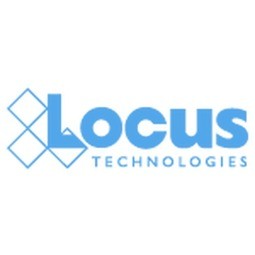下载PDF
GPC streamlines Clean Air Act Title V record keeping using Locus Platform
技术
- 平台即服务 (PaaS) - 数据管理平台
适用行业
- 食品与饮料
适用功能
- 质量保证
用例
- 过程控制与优化
- 监管合规监控
服务
- 云规划/设计/实施服务
- 系统集成
挑战
Grain Processing Corporation (GPC), a leading U.S. manufacturer of corn-based products, was struggling with an inefficient system for tracking and reporting compliance parameters for the Clean Air Act Title V. They were using SharePoint to enter over 20 daily logs at two facilities, with several questions per log and per shift, throughout a two-shift day. Their system lacked reporting or notifications, and there was no consistency between the forms in the system. The EHS manager would spend weeks searching through information to obtain the data needed for GPC’s annual Title V certification report and other reporting needs.
关于客户
Grain Processing Corporation (GPC) is a leading U.S. manufacturer of corn-based products. They operate multiple production facilities and are required to comply with the Clean Air Act Title V. This involves tracking and reporting numerous emission sources and points at their various production facilities. The company was previously using SharePoint to manage over 20 daily logs at two facilities, with several questions per log and per shift, throughout a two-shift day. However, this system lacked reporting or notifications, and there was no consistency between the forms in the system.
解决方案
To simplify and standardize data collection and reporting, GPC selected Locus' configurable Platform software solution. Locus Platform was chosen for its ability to be quickly configured to match existing business processes across operating facilities and easily implement changes in permit recordkeeping requirements over time. A dedicated project team at Locus and GPC identified improvements that could be made in Locus Platform from GPC's existing internal system. The collaborative team developed a comprehensive set of requirements that helped fast-track the project to a timely deployment that met or exceeded the GPC user community's expectations. Within six months, the new system was in daily use, and adoption by the remaining facility locations followed soon after.
运营影响
数量效益
相关案例.

Case Study
The Kellogg Company
Kellogg keeps a close eye on its trade spend, analyzing large volumes of data and running complex simulations to predict which promotional activities will be the most effective. Kellogg needed to decrease the trade spend but its traditional relational database on premises could not keep up with the pace of demand.

Case Study
HEINEKEN Uses the Cloud to Reach 10.5 Million Consumers
For 2012 campaign, the Bond promotion, it planned to launch the campaign at the same time everywhere on the planet. That created unprecedented challenges for HEINEKEN—nowhere more so than in its technology operation. The primary digital content for the campaign was a 100-megabyte movie that had to play flawlessly for millions of viewers worldwide. After all, Bond never fails. No one was going to tolerate a technology failure that might bruise his brand.Previously, HEINEKEN had supported digital media at its outsourced datacenter. But that datacenter lacked the computing resources HEINEKEN needed, and building them—especially to support peak traffic that would total millions of simultaneous hits—would have been both time-consuming and expensive. Nor would it have provided the geographic reach that HEINEKEN needed to minimize latency worldwide.

Case Study
Energy Management System at Sugar Industry
The company wanted to use the information from the system to claim under the renewable energy certificate scheme. The benefit to the company under the renewable energy certificates is Rs 75 million a year. To enable the above, an end-to-end solution for load monitoring, consumption monitoring, online data monitoring, automatic meter data acquisition which can be exported to SAP and other applications is required.

Case Study
Coca Cola Swaziland Conco Case Study
Coco Cola Swaziland, South Africa would like to find a solution that would enable the following results: - Reduce energy consumption by 20% in one year. - Formulate a series of strategic initiatives that would enlist the commitment of corporate management and create employee awareness while helping meet departmental targets and investing in tools that assist with energy management. - Formulate a series of tactical initiatives that would optimize energy usage on the shop floor. These would include charging forklifts and running cold rooms only during off-peak periods, running the dust extractors only during working hours and basing lights and air-conditioning on someone’s presence. - Increase visibility into the factory and other processes. - Enable limited, non-intrusive control functions for certain processes.

Case Study
Temperature Monitoring for Restaurant Food Storage
When it came to implementing a solution, Mr. Nesbitt had an idea of what functionality that he wanted. Although not mandated by Health Canada, Mr. Nesbitt wanted to ensure quality control issues met the highest possible standards as part of his commitment to top-of-class food services. This wish list included an easy-to use temperature-monitoring system that could provide a visible display of the temperatures of all of his refrigerators and freezers, including historical information so that he could review the performance of his equipment. It also had to provide alert notification (but email alerts and SMS text message alerts) to alert key staff in the event that a cooling system was exceeding pre-set warning limits.

Case Study
Coca-Cola Refreshments, U.S.
Coca-Cola Refreshments owns and manages Coca-Cola branded refrigerators in retail establishments. Legacy systems were used to locate equipment information by logging onto multiple servers which took up to 8 hours to update information on 30-40 units. The company had no overall visibility into equipment status or maintenance history.





